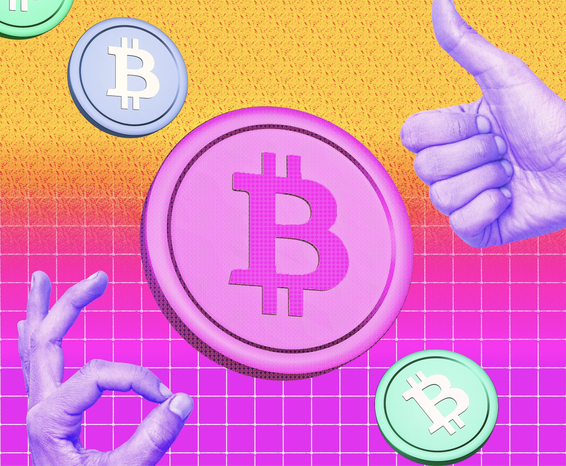Share
NFTs: fraud or the future?
Aug 22, 2022

According to DappRadar, sales for non-fungible tokens (NFTs) skyrocketed from $94.9 million in 2020 to $24.9 billion in 2021. There’s clearly a growing demand for these novel digital assets, especially among users between the ages of 18 and 34, despite skepticism from mainstream financial media outlets.
As compliance and fraud experts, all of us at Alloy make it our business to stay several steps ahead of trends in fraud and risk assessment, specifically their impact on financial institutions’ ability to deliver products in a safe, compliant way. NFTs are no exception.
In this post, we’ll share our take on the NFT landscape and highlight some of the challenges posed by NFT marketplaces. We’ll also explain how a risk-forward approach can minimize fraud and manage risk, even as federal regulatory guidance on NFTs continues to be fleshed out.
What can NFTs do for you?
NFTs as an asset class are still in the early stage, but in many ways, they could prove pivotal to the future of decentralized finance.
Here are just a few of the possible use cases worth considering:
Digital passport - NFTs can empower people to own, demonstrate and use a single identity across platforms that can allow them to authenticate and interact with next-gen financial products.
Personal lending solutions – A neobank accepts NFTs as collateral for a personal loan. Smart contracts execute the transaction, and if the borrower defaults, the neobank lender automatically receives the collateralized NFTs.
Streamlined property transactions – A seller transfers ownership of their house to a buyer through an NFT, bypassing the need for a title search and other traditional legal documents
Securitized products - NFTs can enable fractional ownership of traditionally non-fungible items. For example, a piece of fine art can be divided into hundreds or thousands of NFTs to enable a novel model of collective ownership.
But let’s come back down to earth for a moment and explore the ways people are using NFTs today.
Are NFTs the new art deals?
Who knew that an AI-generated cartoon of a bored ape could command the same monetary value as an oil painting by Van Gogh? Thanks to the allure of a one-of-a-kind image existing in a niche marketplace and living on the blockchain, collectors are treating some NFTs as rare (and potentially expensive) works of art. And like a coveted art masterpiece, an NFT can inspire forgeries and acts of fraud, including high-stakes money laundering.
Unfortunately, just like art auctions, NFT marketplaces continue to ignore KYC compliance, which makes them vulnerable. Although lawmakers introduced legislation in 2018 that would have required art dealers to perform KYC checks, the bill didn’t pass. Similarly, there are no measures for KYC compliance on major NFT marketplaces.
The US Senate recently took a step closer to federal oversight of NFTs specifically with the Responsible Financial Innovation Act, proposed in 2022 by Senators Gillibrand and Lummis. The draft bill classifies NFTs as global commodities like wheat and oil, and stipulates that they should be regulated by the Commodity Futures Trading Commission.
A look at some of the more colorful exchanges
NFTs can also be compared to rare coins or baseball cards—popular collectibles for the average hobbyist to buy, sell, or trade—either for fun or profit. Today, these transactions happen on marketplaces.
Here are a few NFT marketplaces that have made a big splash in the space:
- OpenSea – The world’s first and largest NFT marketplace, OpenSea launched in 2017 and is perhaps best known for featuring Yuga Labs’ Bored Ape Yacht Club collection of 10,000 unique, computer-generated Bored Ape tokens. OpenSea supports four blockchains: Ethereum, Klatyn, Polygon and Solana. In the summer of 2022, the platform made news after suffering a massive data breach.
- GameStop – Founded in 1984, Gamestop was originally a brick-and-mortar retailer of consumer electronics, video games and merchandise. The rise of ecommerce inspired the company to slowly explore other revenue sources. With the outbreak of the Covid-19 pandemic, GameStop accelerated its plans and in 2022, launched its own NFT marketplace on the Ethereum blockchain. According to Business Insider, it’s all part of GameStop’s vision to become “the Amazon of gaming.”
- Coinbase – The largest cryptocurrency exchange based on sales, Coinbase was founded in 2012 by a former Airbnb engineer. The company launched its NFT marketplace in 2021. NFT Coinbase features collectible 3-D art tokens, including 500 scaredy Cubits Genesis, and supports the BNB, Ethereum, Avalanche C-Chain and Polygon blockchains.
- LooksRare – Launched in January 2022 by two anonymous co-founders, LooksRare was meant to offer a decentralized alternative to OpenSea. It operates on the Ethereum blockchain.
Despite the hours that NFT enthusiasts spend on the various platforms, it’s not all fun and games. The continued growth of these niche markets means more and more users will partake in unregulated, potentially risky transactions. The fact that this space can be anonymous also invites bad actors, and lawmakers has a long way to go before they catch up to the warp speed of illicit activity around NFTs. In the next section, we’ll dive into some of the most common online scams.
Meet the new fraud, same as the old fraud
Well, almost the same. While web3 fraud reflects the age-old practices of duplicity and deception, DeFi has delivered a new set of tech tools that give fraudsters access to personal and financial data. These opportunists can hide behind fake wallet addresses while carrying out large-scale fraud.
In February 2022, the Department of Justice acknowledged the money laundering risks associated with NFT exchanges, which they classified as VASPs (virtual asset service providers). And while illicit NFT activity is subject to oversight by FinCEN, the regulatory process is still a bit murky.
Let’s be clear: NFTs themselves aren’t necessarily a scam. But bad actors can easily exploit the NFT space due to the lack of regulatory oversight. Moreover, scam victims have little recourse to recover stolen assets.
Here are some common examples of illicit activity involving NFTs:
- Insider trading — Insider trading means taking advantage of confidential, proprietary information to buy or sell a publicly traded security or commodity. A former employee of OpenSea, for example, was charged with insider trading and wire fraud when he allegedly bought NFTs before they were listed on the company’s homepage. Once the tokens were uploaded to the marketplace, he sold them at an inflated price.
- Wash trading — A type of market manipulation, wash trading occurs when fraudsters repeatedly buy and sell an NFT within a short period of time, artificially inflating the NFT’s perceived value in the process. An unsuspecting buyer might end up paying a lot more for a token than it’s worth. While wash trading has had a huge impact on crypto exchanges, it hasn’t been as widespread within the NFT network (so far). If anything, a relatively small number of wash traders are making off with huge amounts of money, but most of them aren’t seeing a profit.
- Rug pulling — In this take-the-money-and-run scam, fraudsters aggressively promote a new NFT. A buyer shows interest and pays for the token, but never receives it. That’s exactly what happened when two men advertised their new series of NFTs based on “Frosties” cartoon characters to attract investors. The pair abruptly abandoned the project after receiving over $1 million in cryptocurrencies from unwitting investors. The men were charged with wire fraud and conspiracy to commit money laundering.
- Money laundering — Cybercriminals routinely use NFT marketplaces to exchange laundered funds. If a criminal can use stolen funds to purchase an NFT, they can later sell the NFT and receive funds that appear legitimate. This helps scammers, rug-pullers and hackers to cover their tracks. It also allows sanctioned individuals to work around financial restrictions. According to a Chainalysis report, nearly $1.4 million worth of cryptocurrency was sent to NFT exchanges from suspicious wallet addresses in Q4 of 2021 alone.
Envisioning a risk-forward approach
Before bad actors truly perfect the art of sophisticated NFT-based crime, the fintech industry should seize the moment. Here's what NFT marketplaces could look like in an ideal world:
A clear onboarding system and CIP/KYC processes for both on-chain and off-chain activity
A system to identify similarities between TradFi and DeFi fraud patterns, including individual behavior in TradFi that can predict fraud likelihood in DeFi
The use of alerts to monitor high-volume and high-value NFT transactions for potential money laundering activity
The ability to track onboarding and follow money as it moves across on- and off-ramps, as well as on-chain
The ability to maintain allow-and-deny lists for customers, and to retain a clear record of transactions in support of AML compliance
What does the future hold for NFTs?
Will NFT exchanges end up as havens for traffickers and terrorists? Or will they become launchpads for web3 innovation and democratized access, beyond enabling people to buy and sell rare collectibles? The answer will depend on the industry’s willingness to adhere to regulatory practices.





